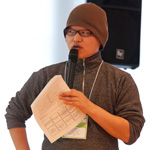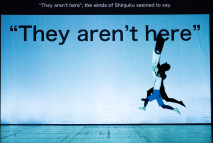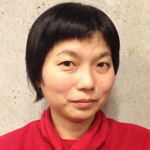What could be the contemporary theater of Asia that the whole region could share? We don’t know yet. Each of the three programs I propose this year, however, may suggest a lead to tackle this big question from two angles.
In today’s global system of capitalism and highly developed information society, the whole region of Asia has come to have a common ground of urban society to a certain extend. While Hickey Cancun Tornado and Girl X talk about the independence of an individual in a mature society, I believe they both may hint at the “now” of the entire Asia.
On the other hand, the more common ground we share, the more important and critical it must become for us to be aware of the cultural diversity and traditions of different areas in Asia. The word “contemporary” does not necessarily mean it’s all the same across Asia although we live in the same present time. In an attempt to fully understand this aspect of the issue, no play is more thought-provoking than the SCOT’s production of The Trojan Women that layers the ancient Greece with today’s wars, and reflect the Japanese traditional values upon the present realities of the world.
TPAM Direction
Directors, whose activities are unique, are appointed by TPAM as the directors of this program. They freely propose concepts and new points of view in their directions, through which we can share contemporary ideas and issues to contemplate on the possibilities of performing arts.
Masashi Nomura
(Producer)
Born in Nagano Prefecture in 1978. After working at public theater, Nomura joined the production division of the Seinendan Theater Company and Komaba Agora Theatre in 2007. In parallel, he worked as dramaturge for young directors. Currently a steering committee member of Asahi Art Square, he also teaches at Obirin University. Since October 2014, he is a program officer of Okinawa Prefecture Foundation for Cultural Promotion.

SCOT

hi-bye
I would like to look at the work of “dancers” in my program. Within the strict bindings of choreography, or in a highly improvisational structure with some given rules, how do the dancers make “moments of dance” happen? Those moments, created by the dancers who have chosen this art as profession for their life, are to be appreciated. The choreographers construct and deconstruct their philosophy and methodology of inducing the “moment of becoming dance”, and repeat the process through their body. Then, at the present, how do they perceive the world through their body? This program shows the works of Pichet Kulunchun and Mika Kurosawa, choreographers who, based in Thailand and Japan respectively, have been creating new contexts of dance free from any conventional idea or methodology. At the same time, can they be free from the proposition that dance can be useful for society, and from the reasons why they dance?. I would like to examine how dance can be free from meanings and personal reasons, or in other words, how dance can be just dance. The two works I present this year are the ones that I firmly believe stand on the point where the two above-mentioned ideas cross.
Fumi Yokobori
Program Director, NPO DANCE BOX
She has been engaging in DANCE BOX since 1999. A trainee under the study program for upcoming artists of the Agency for Cultural Affairs in 2006. Researched the situation of performing arts in six Asian countries and New York as a fellow of the Asian Cultural Council from 2008 to 2009. Based at Art Theater dB Kobe, she has been experimenting on programs that connect “dance,” “local communities” and “theater” and aiming to build network with a focus on Asia.

Pichet Klunchun

Mika Kurosawa & Kobe Dancers
For the last two years as I have been working on the subject of “extension of the definition of theater and its limit”, I have come to ask how a theater can make theater art grow. But this point of view, I have realized, is missing in today’s theater. How can a theater restore its function as a common place for all people to gather freely again? Can we truly share the essence of the art of theater with the audience within this rigid frame of the conventional theater that divides “watcher” and “watchee”? In my proposal at last year’s TPAM Direction program, the space where works were exhibited functioned as a salon where theater and life merged, and I thought that’s something theater should be like. History of the place provides the base of the play, and people who live there are the actors and the audience at the same time. Only in such a space is it possible that theater can be within the life of people. My choice for this program this year is a unit of two who are professional critics/editors. The drive of their work is in their strong interest in the land, and the lives of the people who live there. I believe their approach is capable of opening the theater up even wider to the public where theater can form more diverse relationship with the audience.
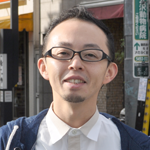 Takuo Miyanaga
Takuo Miyanaga
Presenter/Producer
Born in Tokyo in 1981. Producer of the theater company Mamagoto, Miyanaga also runs his own production unit ZuQnZ. After working for Seinendan, he founded Mamagoto with director and playwright Yukio Shiba in 2009. In recent years, Miyanaga has been earnestly producing outdoor performances as well as theater pieces.

BricolaQ
Southeast Asia – a geographically compact but culturally dense region – is formed over a century-long experience of colonization, nationalism, military dictatorship, urbanization and neo-liberalisation. This history of epistemological violence has produced a rich offspring of contemporary practices that address the dislocations of place and self. From this edition onward, TPAM will identify artists and works that capture the inheritance of a chequered past and the realities of the complex present. Through the lens of contemporary independent artists, we will experience the multiple iterations and mobility of identity that arise inevitably from the transcultural processes of constructing bodies, gestures and languages.
The triptychal works of Eisa Jocson (Philippines) and Melati Suryadarmo (Indonesia / Germany) offer readings into female performativity as their bodies shift from one cultural space into another, creating embodiments and affects that are deep and also unstable. Eisa Jocson moves her professional pole dance practice into an artistic milieu and disavows her own image, then attempts to incarnate as a macho dancer from the subcultural Manila club, and finally grafts her body into a ‘japayuki’ entertainer from the Philippines working in the Japanese salaryman bar. Melati Suryadarmo subjects her body into a regime of repetition in EXERGIE – butter dance and then a durational performance of I LOVE YOU, chronicling her displacement from Indonesia to Germany, and returning to a ritual body where self-possession is re-examined in ‘Borrowed’.
For Eko Supriyanto (Indonesia), it was a journey of discovery from central Java to remote Jailolo to encounter the youths of a marine paradise that is also a conflict zone of religious dogmas. Investing time and dialogue into a relationship – both artistic and personal – with his new ‘community’, Eko negotiates many layers of differences to create Cry Jailolo, a work that addresses ethics of ‘collaboration’ between ‘individual’ and the ‘collective’, and what is politically at stake in performance today.
Tang Fu Kuen
Independent Dramaturg, Producer and Curator
Tang Fu Kuen is an independent Bangkok-based cultural worker in contemporary performance and visual fields, working in Asia and Europe. He was the sole curator of the Singapore pavilion at the 53rd Venice Biennale. He has worked in the Singapore Arts Festival, Indonesian Dance Festival, In Transit Festival (Berlin), Bangkok Fringe Festival, Colombo Dance Platform, amongst others.

Cry Jailolo
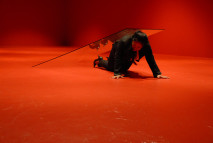
I LOVE YOU
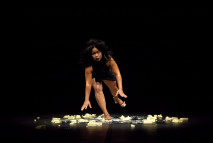
BORROW + EXERGIE – butter dance

Death of the Pole Dancer
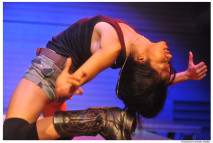
Macho Dancer


